Table of Contents
Brake Pad Thickness in the Mercedes-Benz E-Class W213: A Detailed Case Study
Maintaining proper brake pad thickness in your Mercedes-Benz E Class W213 is essential for both safety and performance. Over time, pads wear down gradually, and once they reach the minimum limit, they must be replaced to preserve braking efficiency and protect the rotors.
The W213’s intelligent Check Brake Pad Wear system alerts the driver when pads are nearing their wear limit. This article explores a real workshop case study that shows how Mercedes technicians diagnosed and resolved a brake pad thickness warning, from initial fault detection to replacement and preventive maintenance.
For a full overview of how ABS, ESP, and Brake Assist work together within the braking system, visit our Mercedes Brake System Problems: ABS, ESP & Brake Assist Guide.

Vehicle Overview: Mercedes-Benz E-Class W213
The E-Class W213 uses an electronic brake pad wear sensor that continuously monitors pad thickness.
When the sensor detects the pads have worn to a predefined threshold, it sends a signal to the Signal Acquisition and Actuation Module (SAM) triggering the “Check Brake Pad Wear” message on the dashboard.
This smart feature ensures early detection, allowing maintenance before braking safety is compromised.

Step 1: Quick Test and Fault Code Diagnosis
The customer reported a brake warning message on the instrument cluster.
Technicians began with a Quick Test using XENTRY Diagnosis, focusing on the brake pad wear sensor circuit.
Results:
- – Fault found in the Signal Acquisition and Actuation Module (SAM), which manages inputs from sensors including brake pad thickness.
- – No hydraulic pressure faults were detected, confirming a purely electrical alert from the wear sensor.
This initial diagnosis confirmed that the issue originated from pad wear rather than a hydraulic or ESP-related malfunction.
Step 2: Visual Inspection of Brake Pad Thickness
A physical inspection was performed to confirm pad condition.
Technicians found the front brake pads were significantly worn, and the sensor tip had contacted the brake disc, closing the circuit and triggering the dashboard warning.
Inspection Findings:
- – Pad thickness: below 3 mm (manufacturer minimum).
- – Sensor condition: worn and damaged from disc contact.
- – Brake discs: light surface scoring but within service limits.
Related guide: Check Brake Pad Wear on a Mercedes-Benz C300 W205
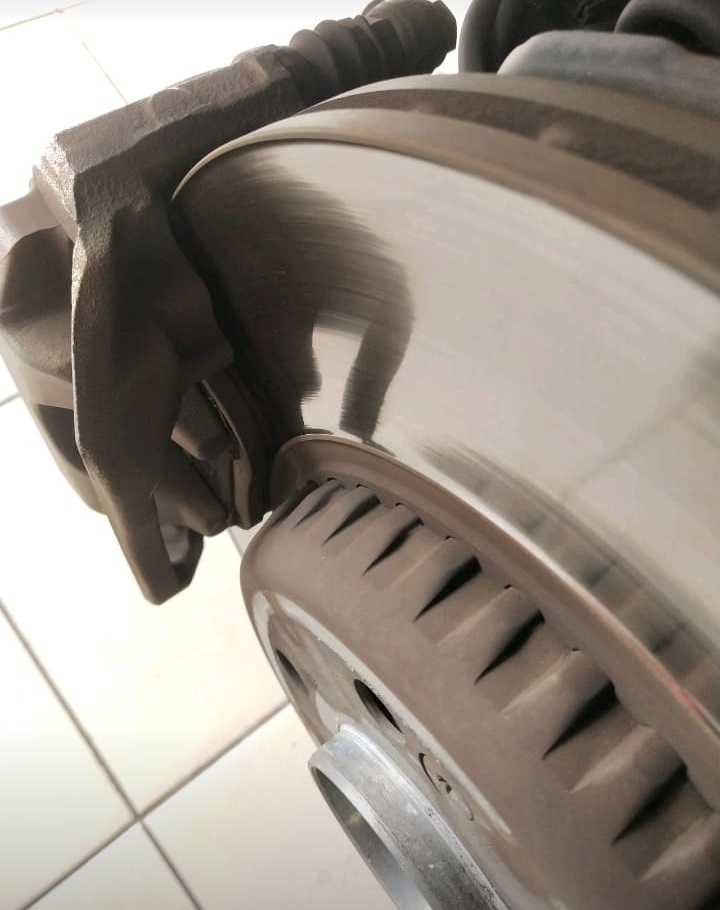
Step 3: Corrective Actions, Pad & Sensor Replacement
Since the pads had reached their wear limit, both the brake pads and wear sensors were replaced.
This ensures accurate future monitoring and consistent braking response.
Replacement Procedure:
- 1. Run Quick Test and record stored fault codes.
- 2. Remove wheel and inspect caliper movement for even piston operation.
- 3. Replace brake pads with OEM-spec parts (minimum 10–12 mm new thickness).
- 4. Install new brake wear sensor, clipped securely into the pad slot.
- 5. Check rotor condition and measure thickness (replace if below specification).
- 6. Reassemble, torque bolts to factory values, and clear fault codes.
- 7. Perform road test and confirm warning light is cleared.

Step 4: Preventive Maintenance & Best Practices
To maintain consistent braking performance and avoid premature wear, Mercedes technicians recommend:
- – Regular Brake Inspections: Inspect pads and rotors every 15,000 km or during tire rotations.
- – Replace Pads & Sensors Together: A worn sensor may give false readings after pad replacement.
- – Respond Promptly to Warnings: Never ignore the Check Brake Pad Wear alert.
- – Brake Fluid Maintenance: Replace brake fluid every 2 years using DOT 4+ fluid.
- – Smooth Driving Habits: Avoid aggressive braking, which accelerates pad and rotor wear.
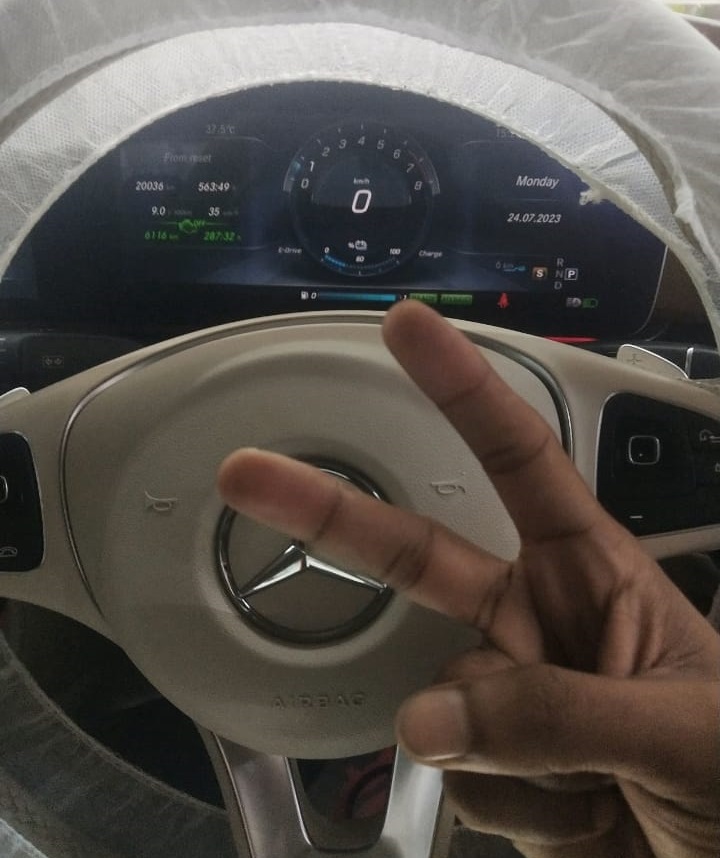
Step 5: Understanding “Check Brake Pad Wear” in Mercedes Vehicles
This safety alert ensures that brake pad replacement occurs before the wear reaches a dangerous level.
Here’s how it works:
| System Function | Explanation |
|---|---|
| How it works | Sensor contacts the rotor when pad thickness falls below ~3 mm, triggering the dashboard warning. |
| Dashboard message | “Check Brake Pad Wear” appears with a yellow BRK icon, indicating the need for service. |
| Importance | Prevents metal-to-metal contact between pad and disc, avoiding rotor damage. |
| Action required | Immediate inspection and pad replacement. Ignoring it can lead to unsafe braking and costly repairs. |
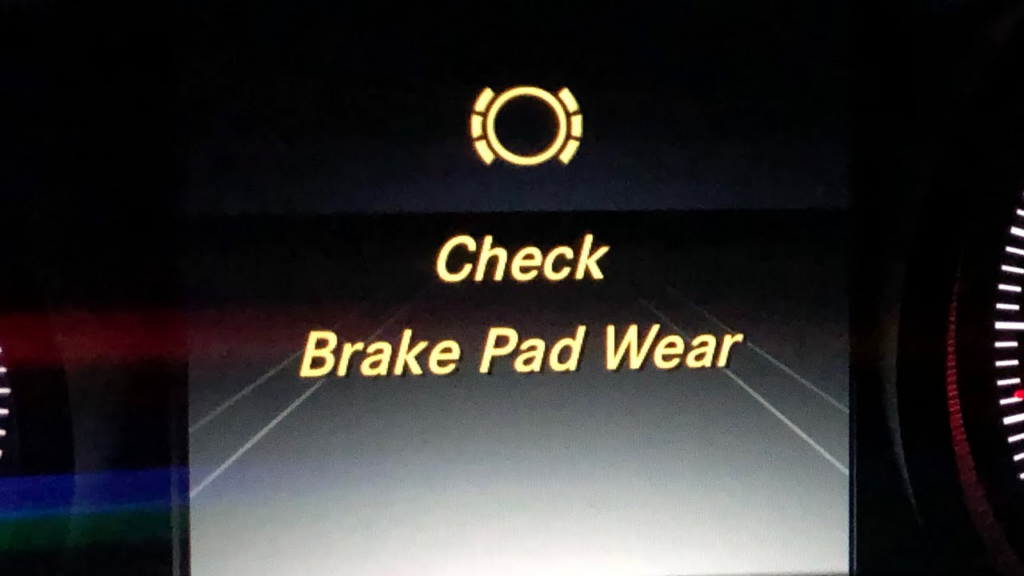
Step 6: Common Repair Steps
- 1. Perform Quick Test to confirm sensor signal.
- 2. Inspect pad thickness visually.
- 3. Replace pads and sensors if worn.
- 4. Inspect rotors and resurface or replace if necessary.
- 5. Clear fault codes and verify the message is gone.
- 6. Conduct a road test to confirm smooth braking and no vibration.
Key Takeaways
- – Minimum pad thickness: ~3 mm triggers the warning.
- – New pad thickness: typically 10–12 mm.
- – Replace sensors whenever pads are changed.
- – Check brake fluid and caliper operation during service.
- – Early intervention prevents damage to discs and ensures safety.
For an in-depth look at how the ABS, ESP, and Brake Assist systems interact with the braking system in your Mercedes, explore our detailed hub:
Mercedes Brake System Problems: ABS, ESP & Brake Assist Guide
FAQs
Q1: What is the minimum safe brake pad thickness on the Mercedes W213?
The safe limit is around 3 mm. Below this, the wear sensor activates and pads must be replaced.
Q2: Can I reset the brake pad wear warning without replacing pads?
No, the warning resets automatically once new pads and sensors are installed and the circuit is restored.
Q3: How do I know if my brake discs need replacement?
If they’re scored, warped, or below the minimum thickness (check on rotor edge), replacement is required for safe braking.
Conclusion
This case study on the Mercedes-Benz E-Class W213 shows how critical brake pad thickness is to vehicle safety.
By performing proper diagnostics, replacing worn pads and sensors, and following preventive maintenance, technicians restored the braking system’s full functionality.
Author Bio
Mercedes Expert is an automotive technical trainer and Mercedes-Benz diagnostics expert with extensive hands-on experience in XENTRY, DTS Monaco, and advanced system troubleshooting. He specializes in transforming real workshop case studies into structured learning content to help technicians, car owners, and enthusiasts understand complex vehicle systems.
Last update: October 2025


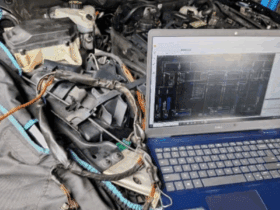


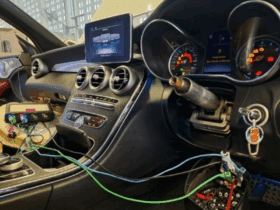
Leave a Reply